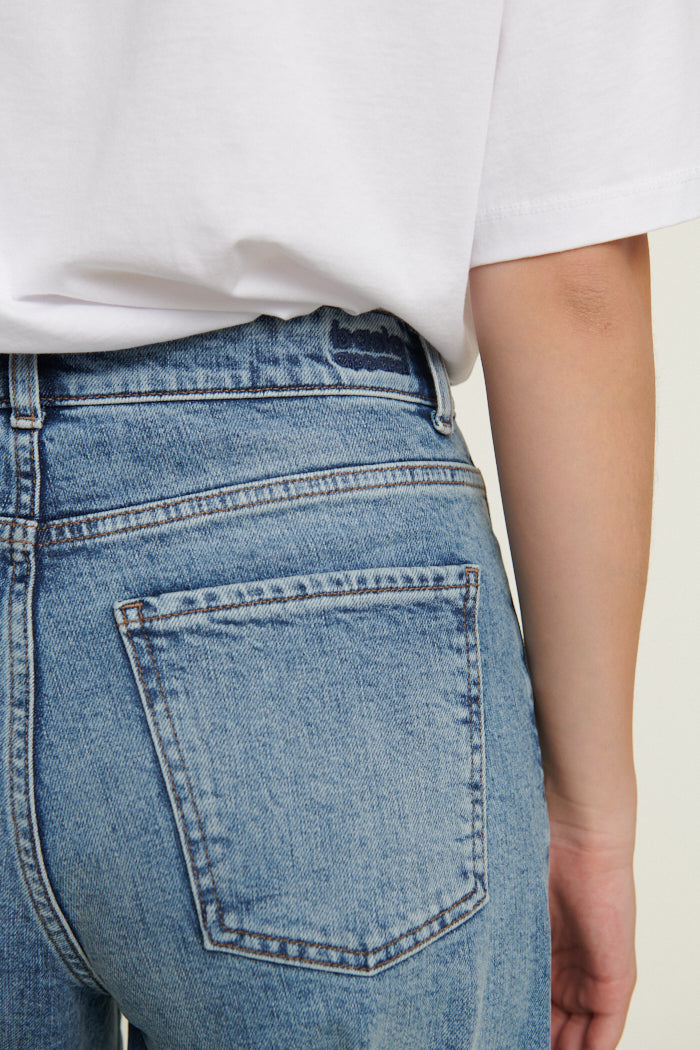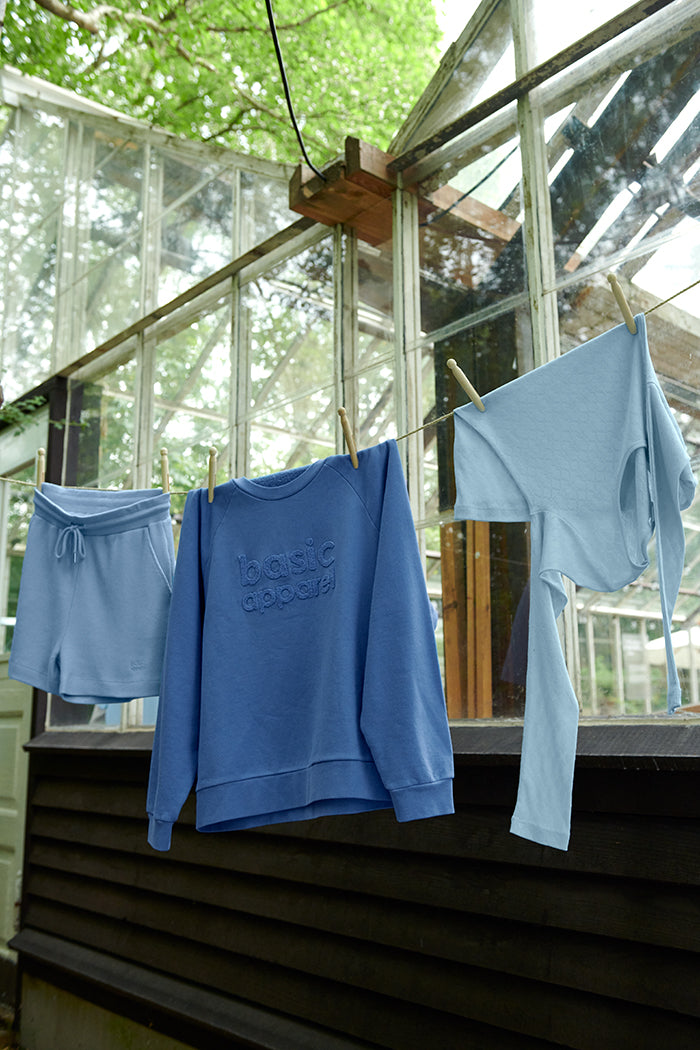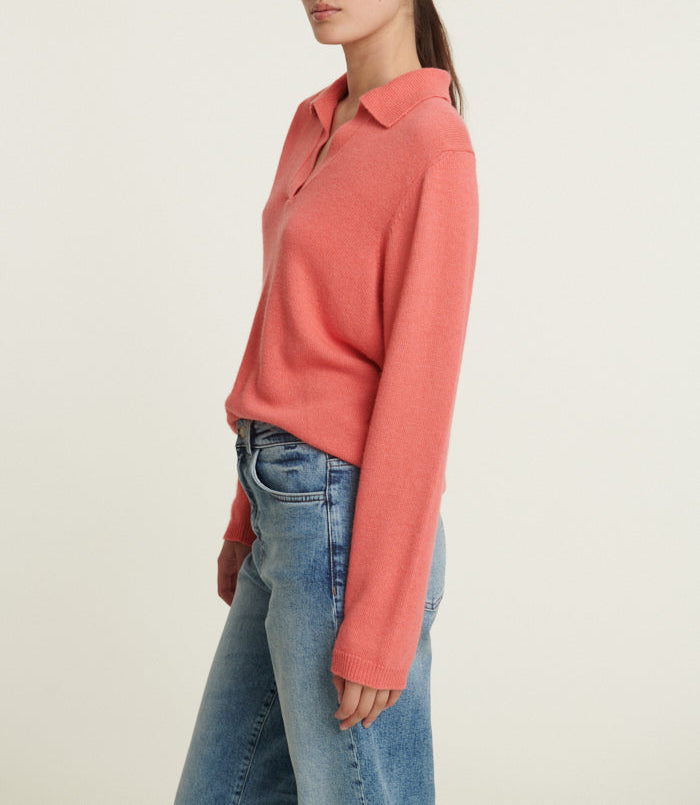You should know this
When we select materials for our styles, we place particular emphasis on them being luxurious, responsible, and easy to use. But we also consider whether they are easy to wash and care for, so they can work in a busy everyday life. And although we've already made an effort to make it easy, we'd like to make it even easier – many of us still follow, if we may be so direct, some somewhat outdated norms when it comes to laundry.
We wash too often
Do you automatically throw your clothes in the wash after 1-2 uses? You’re not alone in that, but in many cases, it's not even necessary.
On the contrary, clothes suffer unnecessary wear from being washed too often. Of course, there's a difference in how close we wear different clothes to our bodies, and therefore also in how much washing they need, but in many cases, you can start by freshening them up with something as simple as airing them out.
Natural fibers like cotton and wool typically develop less odor than synthetic materials. In addition, they (especially wool) have some pretty clever self-cleaning properties that you can take advantage of. For example, you can hang your clothes near an open window or outside. Yes, a trip to the freezer can even work. And if you don’t feel like wearing the same clothes the next day, there’s no shame in hanging them back in the closet.
If you’ve got a stain on your clothes, it’s also not always the best idea to throw them in the washing machine first. On the contrary, most stains can be saved with a little clear dish soap, as long as it’s applied shortly after the stain occurs.

We wash too warm (and wrong)
Are you about to do laundry?
The temperatures at which many of us wash come from a time when detergents and machines didn’t have the same capabilities, and today there are a wealth of products that effectively clean at 15-30 degrees. When the washing label on your clothes recommends 40 degrees, it should be understood as a maximum temperature.
In addition to the temperature, the dosage of your detergent is actually quite crucial for both effective and gentle cleaning. It’s important to follow the dosage recommendations on the packaging, and even though it may take some practice to measure it initially, it quickly becomes easier.
When washing wool (and silk), we recommend that you only use a detergent specifically designed for these materials, as otherwise, you risk your detergent containing the enzyme protease, which breaks down the proteins the materials are made of. When washing synthetic materials, in addition to using a Guppyfriend bag, we recommend avoiding fabric softeners, as they make it harder for synthetic materials to release any potential odors.

What do all the symbols mean?
Read along here
Washing
When you see the washing symbol (the small tub), it's important to first note that the numbers indicate a maximum temperature. If there’s a cross over the washing symbol, it means that the garment should not be washed at all. If a hand is shown, it means the garment should be hand washed. If there are no lines under the icon, you can wash it on a normal cycle, while one line means you should choose a gentle cycle with fewer spins, and two lines mean you should choose an extra gentle cycle, such as one designed for wool or silk.
Bleaching
The symbol for bleaching is a triangle. A cross over the triangle means you should avoid bleaching, while the letters "CL" in the triangle mean the garment can tolerate chlorine bleach.

Continuation...
Tumble Drying
The symbol for tumble drying is a square with a circle inside. If the circle is empty, it means you can tumble dry as usual. If there are dots inside the circle, these indicate the maximum temperature at which you can tumble dry (1 dot is low temperature, 3 dots is high). However, if there is a cross over the symbol, it means you should not tumble dry the garment.
Drying
The symbol for drying is a square. If there is a curve at the top of the square, it means you can dry the garment, for example, on a clothesline. A horizontal line inside the square means the garment should be dried flat (for example, to prevent it from stretching out of shape). Diagonal lines mean it should be dried in the shade, and three vertical lines mean the garment should drip dry while hanging.

...And finally!
Ironing
The symbol for ironing is an iron. If there is a cross over the iron, it means you should not iron the garment. However, if there are dots inside the iron, these indicate the temperature at which you can iron (1 dot is low temperature, 3 dots is high). If you want to protect your garment as much as possible, you can instead steam it.
Dry Cleaning
The symbol for dry cleaning is a circle. If there is a cross over the circle, dry cleaning should be avoided. An "F" means the garment can only be dry cleaned with a chemical process, while a "P" means the garment can tolerate all types of dry cleaning (except trichlorethylene). A "P" with a line underneath means it should be done gently, similar to the washing instructions.

Do you have questions about garment care?
Our customer service team is happy to assist and guide you with washing, drying, and overall care instructions.
